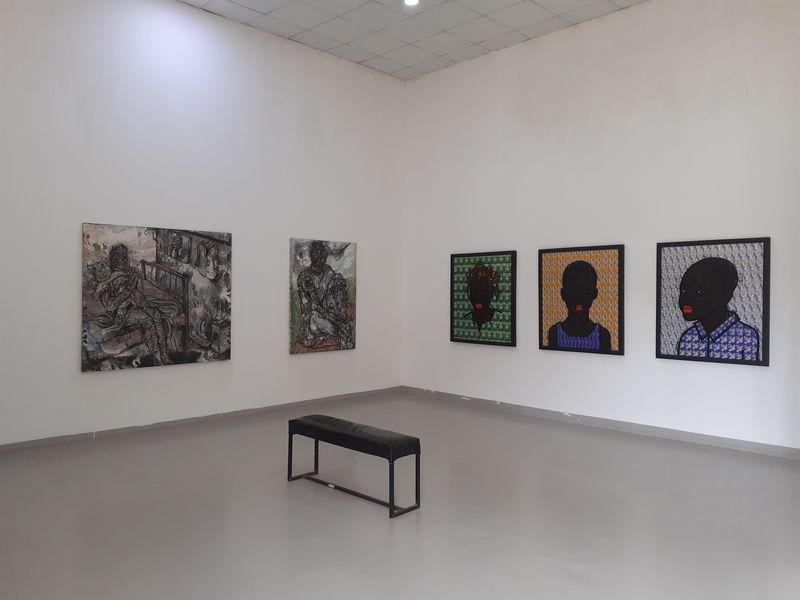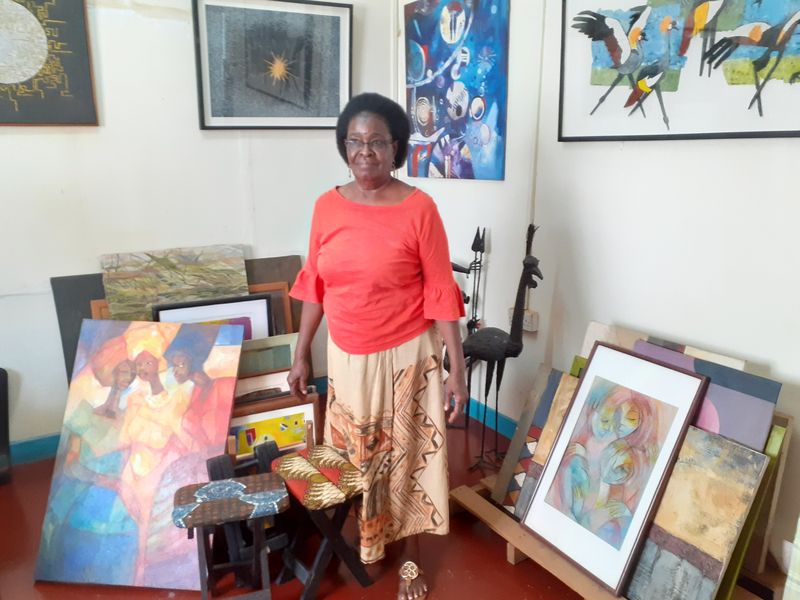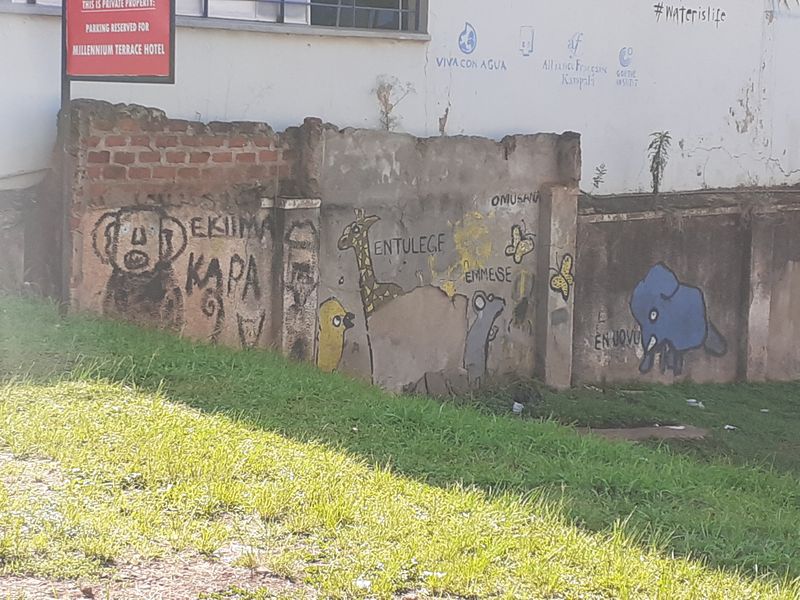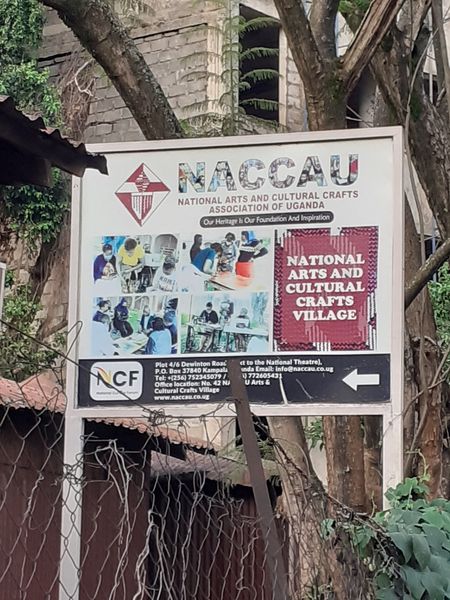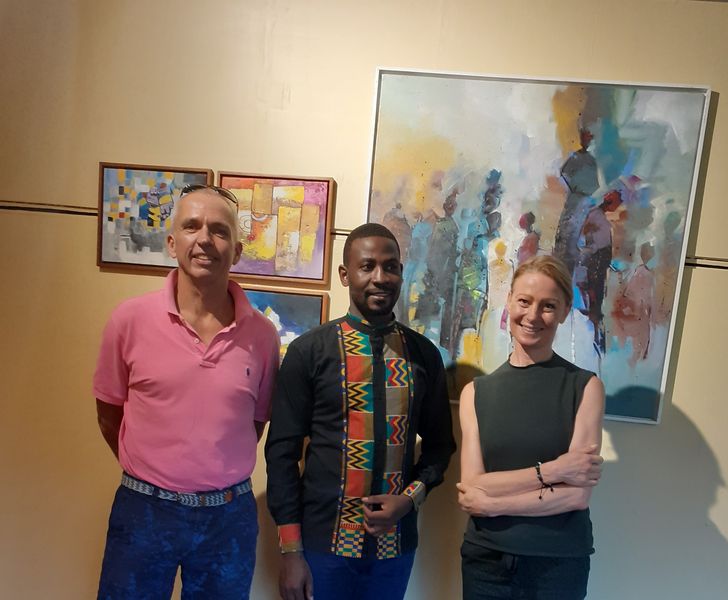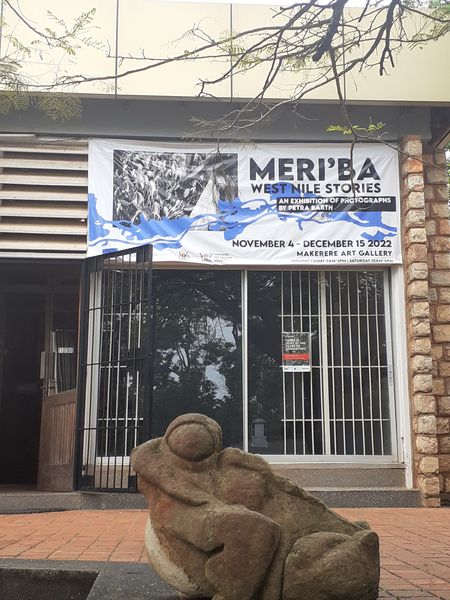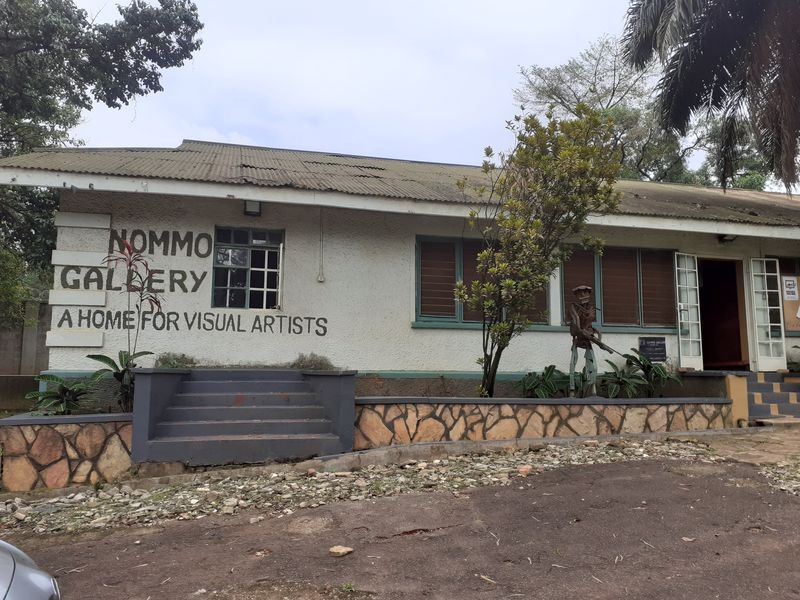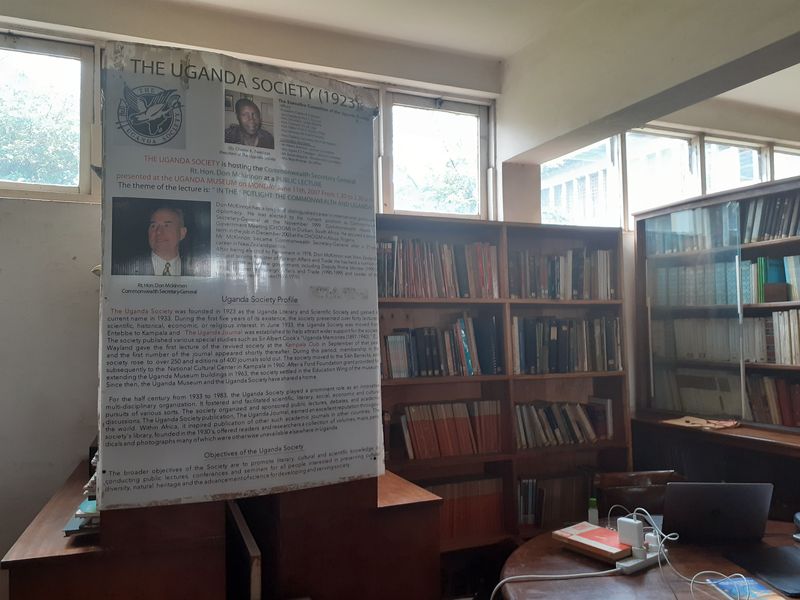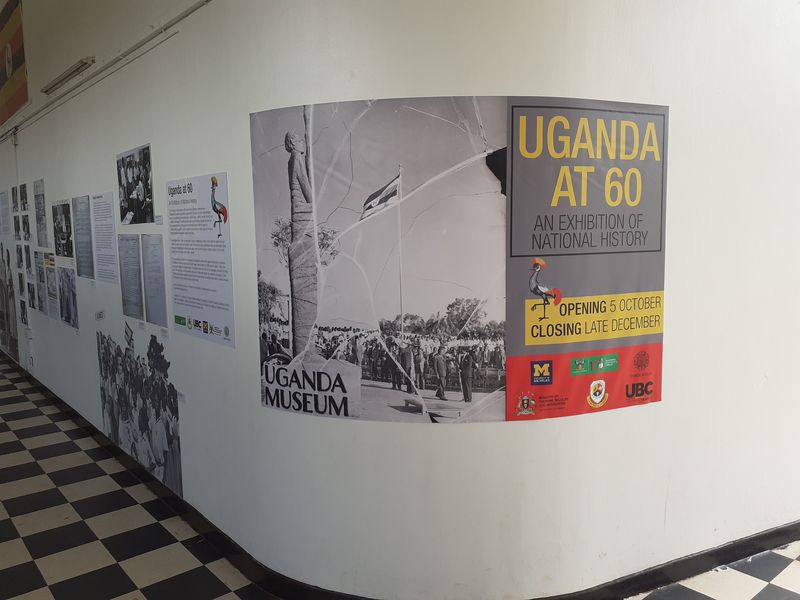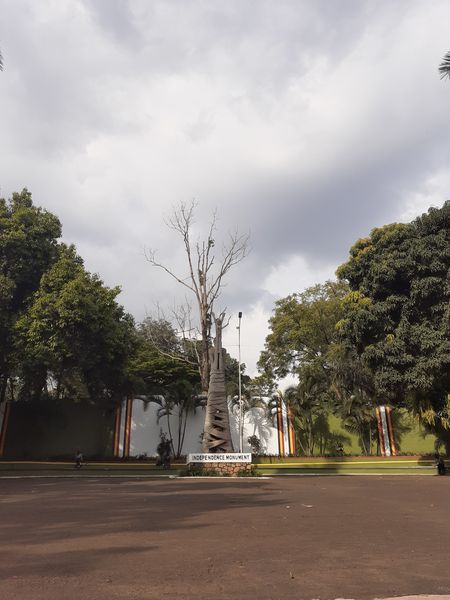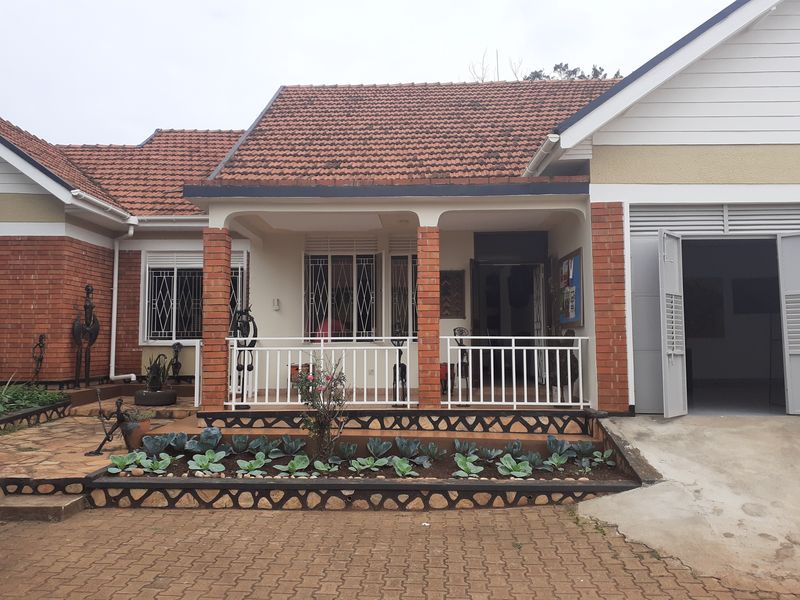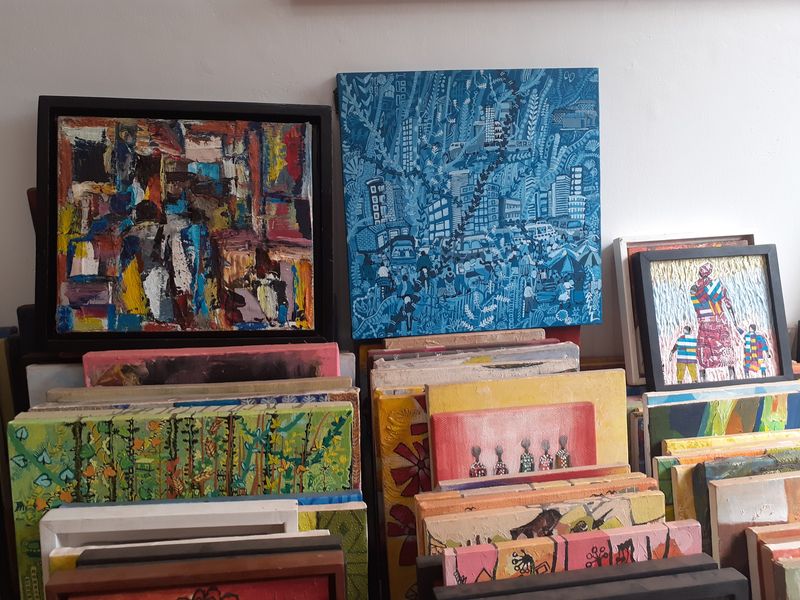Flowing from the success of the first-ever national pavilion at the 55th Biennale di Venezia, Ugandan artists are becoming more prominent in the art world. TPAAE researcher Marlena Chybowska-Butler (MCB) journeyed to Uganda as part of her autumn 2022 secondment to explore the country’s Contemporary Art scene and develop professional contacts. Her week-long stay included meetings with artists, curators, gallerists and administrators, as well as visits to institutions art-making spaces both in Kampala and outside the capital.
Like other countries in the region, very little government money is spent to support art and culture production. In fact, the Ugandan Pavilion, a private undertaking by a Swedish artists’ representative, received only honorary patronage from one arm of the country’s bifurcated ministerial structure responsible for culture. As a result, and despite boasting East Africa’s oldest university and school of art, the infrastructure and ecosystem is under-developed.
While professional galleries exist, they mostly are collective efforts that see artists showing what works they are able to get on the limited available exhibition space and showing at multiple venues. For example, a 20-year retrospective saw works by one local painter and sculptor being offered for sale at several galleries, including the state-run Contemporary Art gallery that is the oldest in the region.
An exception is the Afriart Gallery, which is a commercial enterprise located in an industrial area of the city that is home to building supply shops. Known by the acronym AAG and run by artist Daudi Karunge, the gallery curates exhibitions of works by artists from around the region, whose works it ships regularly to global art fairs and exhibitions. Formerly located in a suburban neighborhood, AAG also provides a supportive program for young artists and internships for aspiring curators.
Seeking to emulate that success is the Xenson Gallery, which emerged to fill the space vacated by AAG when it moved to the city center. Artist Samson Ssenkaaba, who signs his paintings and multimedia works Xenson, offers temporary exhibitions and talks with featured artists and moderated by critics and curators. These are in addition to displays of works from past shows that are offered for sale.
Similarly, the AKA Gallery utilizes its space to feature artists and possesses a considerable storehouse of works by regional artists. Begun in the early 1990s by educators from Makerere University, AKA provides a venue for newly graduated students and established artists both to showcase their works. The gallery has a wide range of both artistic and decorative items on offer and is located side-by-side with craft shops and retailers.
The university, founded in 1922 as technical school, operates a gallery that features works by graduates on its annual calendar of exhibitions. The Makerere Art Gallery is part of the School of Engineering, Design, Art and Technology, which also comprises the Margaret Trowell School of Industrial and Fine Art, begun in 1937, which is continent’s oldest higher-education institution dedicated to art instruction.
The gallery sits adjacent to classrooms and workshops spaces on the university’s campus in the city center. It receives funds from the university budget and supplements its revenues by renting out its space to cultural actors. A photo essay on refugees in Uganda’s West Nile region and curated by Polish transplant Anna Kucma was on during MCB’s visit.
A second venue receiving state support is the Nommo Gallery, which is located nearby the Kampala residence of Ugandan President Yoweri Museveni and must be accessed by passing through a pair of security checkpoints. Established following the country’s 1962 independence, the gallery inhabits a former lodge and is cooled by a system of attic ventilation that keeps its rooms at a constant temperature despite the city’s heat and humidity. Curator Balimunsi Philip, who began an ongoing renovation program aimed at modernizing the space and grounds when he took the job three years ago, oversees a national collection that features art made in the last half of the 20th century through to today. He guided MCB on the visit and the pair engaged in a wide-ranging discussion, including about the prospects of bringing an exhibition of Ugandan art to the National Museum in Szczecin.
Similar discussions took place with the operators on the Umoja Gallery, a collective that counts 40 artists among its members. Operated in a residential setting in the Kampala suburbs, works on display include painting, sculpture and furniture, as well as fashion accessories, craft items and gifts. Gallerists say that their aim is to promote members, whose works fill both the rooms of the converted house and its garden grounds.
MCB also spent time at a restaurant space nearby the Xenson Gallery that community activists have converted into an art hub. At the time of her visit, the space was given over to a children, who were producing crafts for sale at an adjacent shop. The hub also runs similar events for adolescents and adults, whose work and products also were on sale. Organizers said thier work is inspired by a desire to give back in the absence of government support, a sentiment expressed by many in Kampala.

